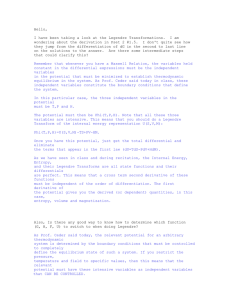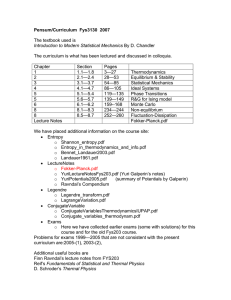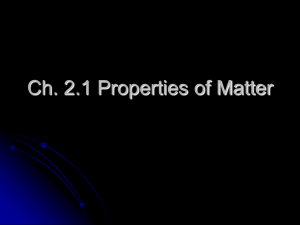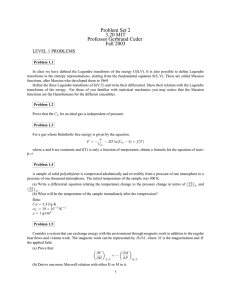I wanted to add a few comments to what Raymundo... point of this problem is in part to see what...
advertisement
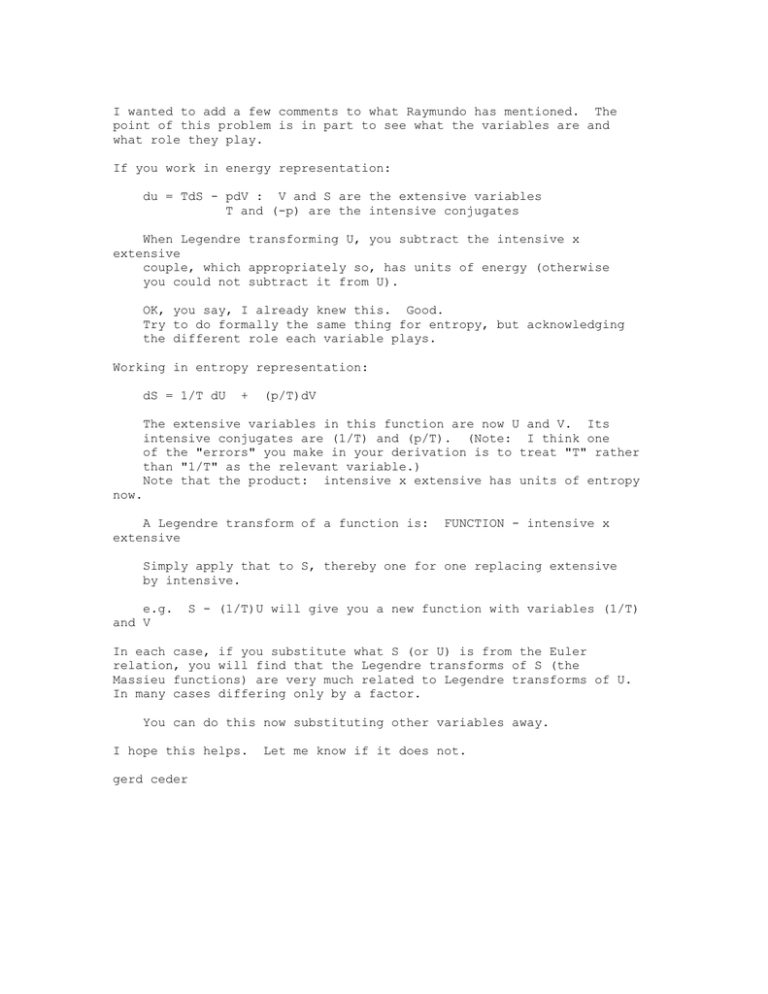
I wanted to add a few comments to what Raymundo has mentioned. The point of this problem is in part to see what the variables are and what role they play. If you work in energy representation: du = TdS - pdV : V and S are the extensive variables T and (-p) are the intensive conjugates When Legendre transforming U, you subtract the intensive x extensive couple, which appropriately so, has units of energy (otherwise you could not subtract it from U). OK, you say, I already knew this. Good. Try to do formally the same thing for entropy, but acknowledging the different role each variable plays. Working in entropy representation: dS = 1/T dU + (p/T)dV The extensive variables in this function are now U and V. Its intensive conjugates are (1/T) and (p/T). (Note: I think one of the "errors" you make in your derivation is to treat "T" rather than "1/T" as the relevant variable.) Note that the product: intensive x extensive has units of entropy now. A Legendre transform of a function is: extensive FUNCTION - intensive x Simply apply that to S, thereby one for one replacing extensive by intensive. e.g. and V S - (1/T)U will give you a new function with variables (1/T) In each case, if you substitute what S (or U) is from the Euler relation, you will find that the Legendre transforms of S (the Massieu functions) are very much related to Legendre transforms of U. In many cases differing only by a factor. You can do this now substituting other variables away. I hope this helps. gerd ceder Let me know if it does not.

